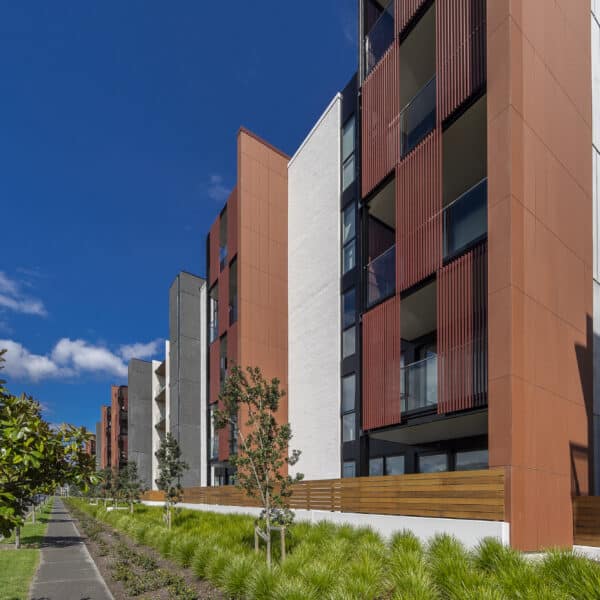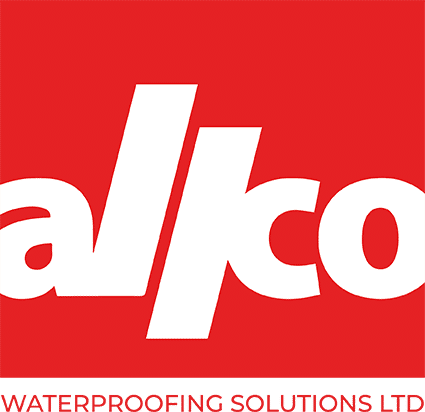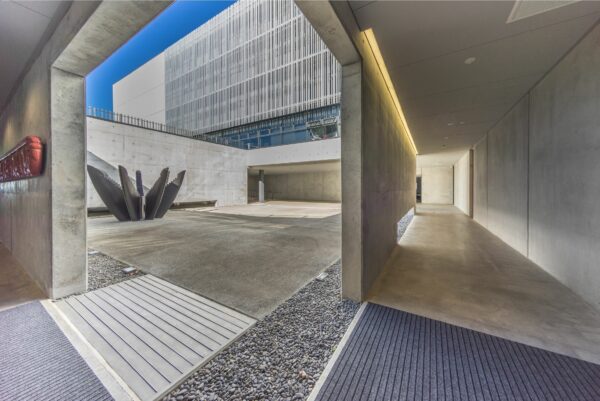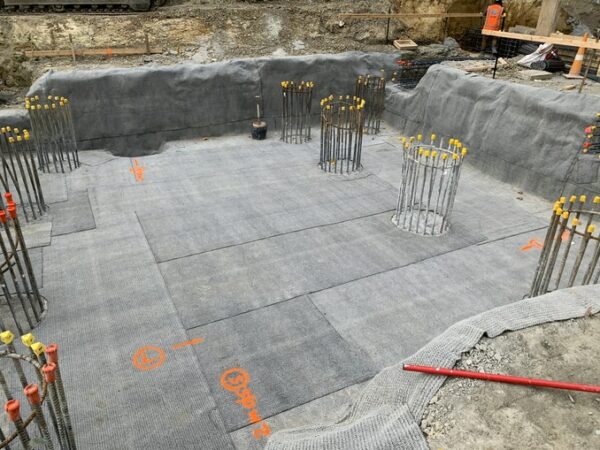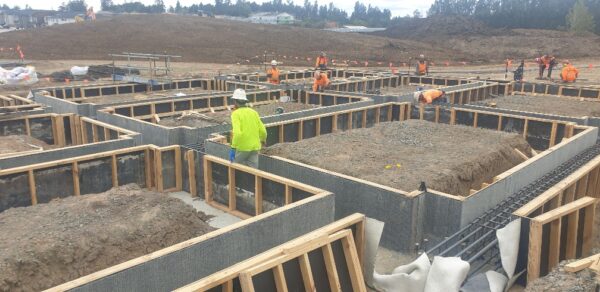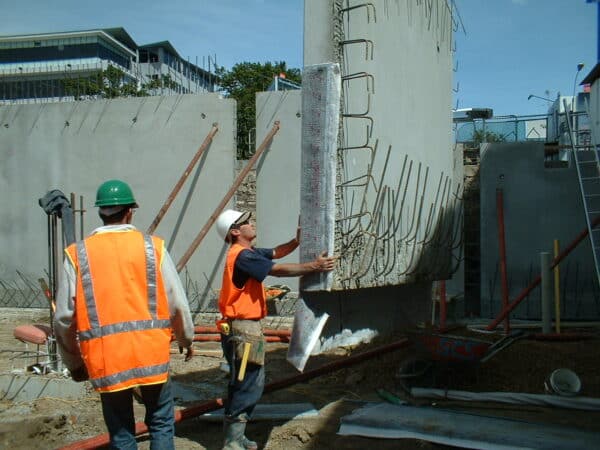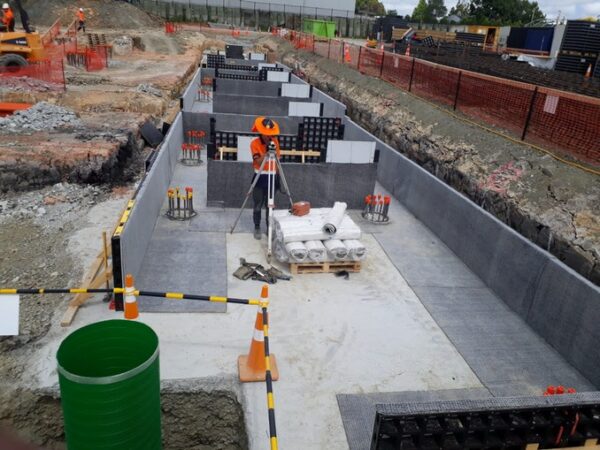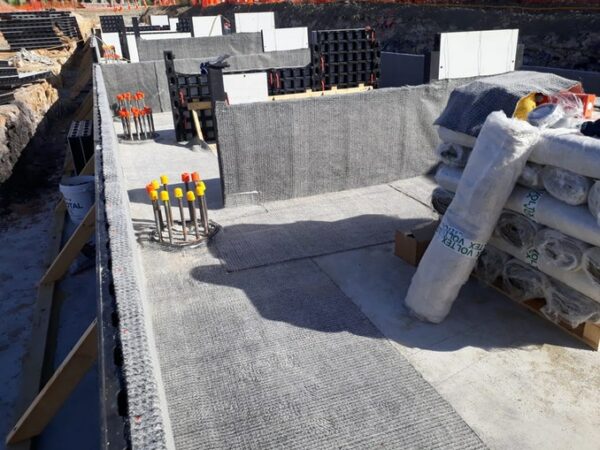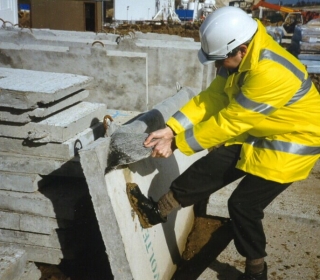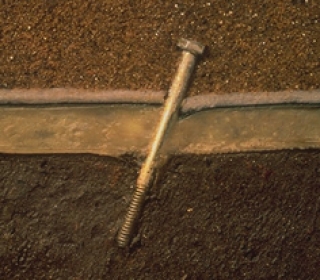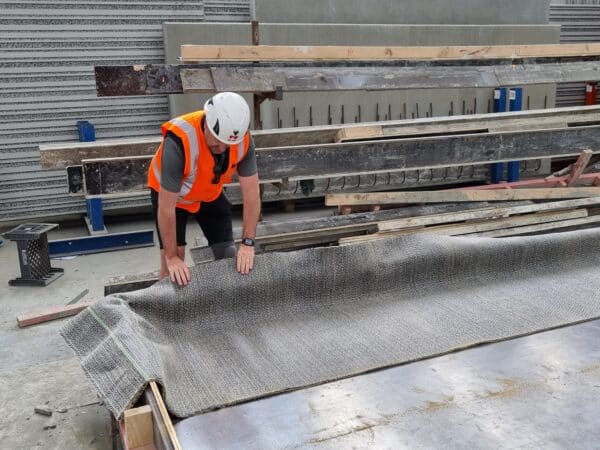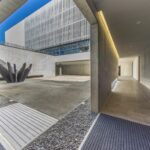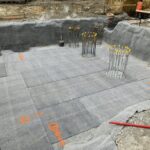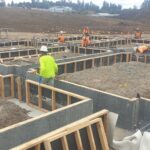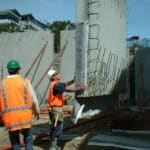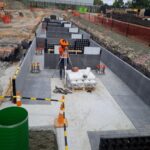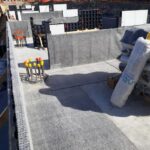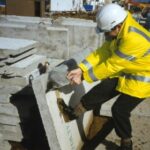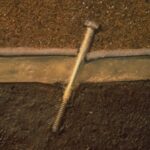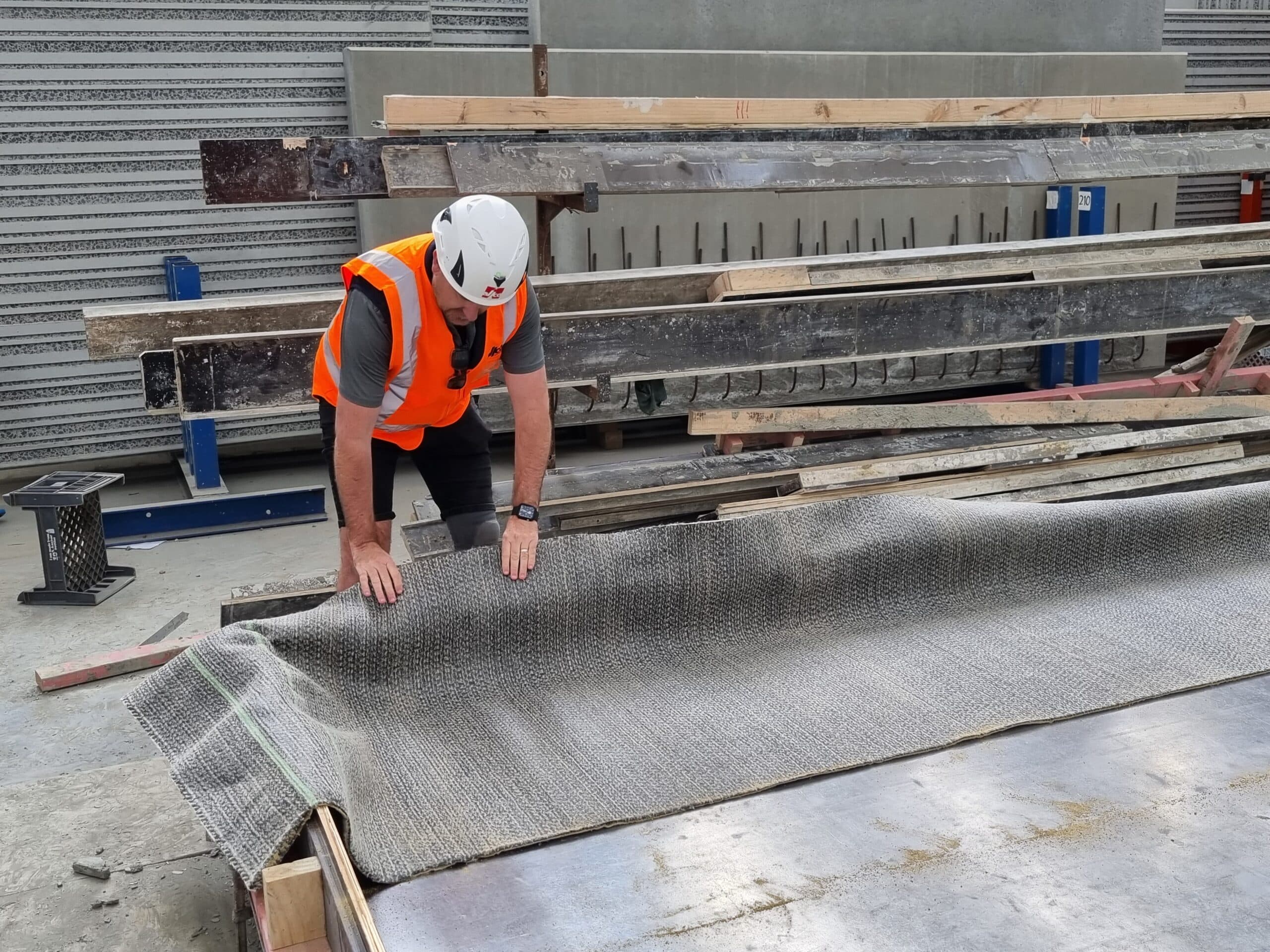Volclay Voltex
- Features
- Description
- Performance
- Projects
- Downloads
Features
Key Features
- Voltex can be installed in virtually any weather making it ideal for waterproofing under slab and at property line applications.
- Voltex can be installed directly over a properly prepared substrate without the need for a concrete mud slab.
- Its durable bentonite composite construction resists damage from tradesmen installing reinforcing steel over it
- The swelling action of Voltex can self-seal small concrete cracks caused by ground settlement, concrete shrinkage, or seismic action; problems over which there is normally no control.
- Installation of Voltex is fast and easy. Place it into position and secure it with mechanical fasteners.
- Voltex can be installed to uncured concrete and in virtually any weather
- When concrete is poured against Voltex, a tenacious mechanical bond is created by the wet concrete solidifying around the geotextile fibres.
Over 50 years of proven performance
With over 50 years of proven performance Volclay Voltex is designed for both vertical and horizontal foundation surfaces. Voltex incorporates the high-swelling and self-sealing properties of sodium bentonite to form a monolithic, low permeable membrane to protect the structure from water ingress.
The high swelling, low permeable sodium bentonite is encapsulated between a non-woven and woven geotextile. A patented needle-punch process interlocks the geotextiles, forming an extremely strong composite that maintains the uniform coverage of bentonite, as well as protecting it from inclement weather and construction related damage.
Once covered with structural concrete or backfilled, Voltex hydrates and forms a monolithic waterproofing membrane; unconfined bentonite can swell up to 15 times its dry volume. When confined under pressure the swell is controlled, forming a dense, impervious waterproofing membrane. The swelling action of Voltex can self-seal small concrete cracks caused by ground settlement, concrete shrinkage, or seismic action; problems over which there is normally no control. Voltex forms a strong mechanical bond to concrete when the geotextile fibres are encapsulated into the surface of poured-in-place concrete.
Applications
VOLTEX is designed for below-ground vertical and horizontal structural foundation surfaces. Typical applications include backfilled pre-cast panels and concrete walls, earth covered roofs, structural slabs, tunnels and property line construction.
Resistance to puncturing:
The polypropylene geotextiles containing the bentonite are robust and resistant to normal site activities. The dropping of heavy articles will normally have no damaging effect on the membrane. Any accidental cuts will self heal when the membrane is hydrated following correct installation. Voltex self-healing properties also allow for the nailing of the product with conventional construction fasteners.
- B2 Durability: Performance B2.3.1 (a) not less than 50 years.
- E2 External moisture: Performance E2.3.3.
- F2 hazardous building materials: Performance F2.3.1. The Volclay Waterproofing System meets this requirement and will not present a health hazard to people.
The Volclay Waterproofing System is an approved Alternative Solution in terms of New Zealand Building Code compliance.
With the durability of the needlepunched composite and the ability to self-heal, Voltex offers major construction advantages over adhered sheet membrane and fluid applied waterproofing.
For contaminated water or salt-water conditions, Voltex is available with a contaminant resistant Volclay sodium bentonite – Voltex SWR.
Roll size & packaging:
Volclay Voltex is supplied in 5.5m² and 66.6m² (Super Sixty) rolls.
Limitations:
- VOLTEX should only be installed after substrate preparation has been properly completed and is suitable to receive the waterproofing system.
- VOLTEX is designed for below-grade waterproofing applications where the product is properly confined.
- VOLTEX products should not be installed in standing water or over ice. If groundwater contains strong acids, alkalies, or is of conductivity of 2,500 μmhos/cm or greater, water samples should be submitted to the manufacturer for compatibility testing.
- VOLTEX is not designed to waterproof expansion joints.
- Do not use VOLTEX on masonry block foundation walls (use Volclay Swelltite).
For further product information please see our frequently asked questions page
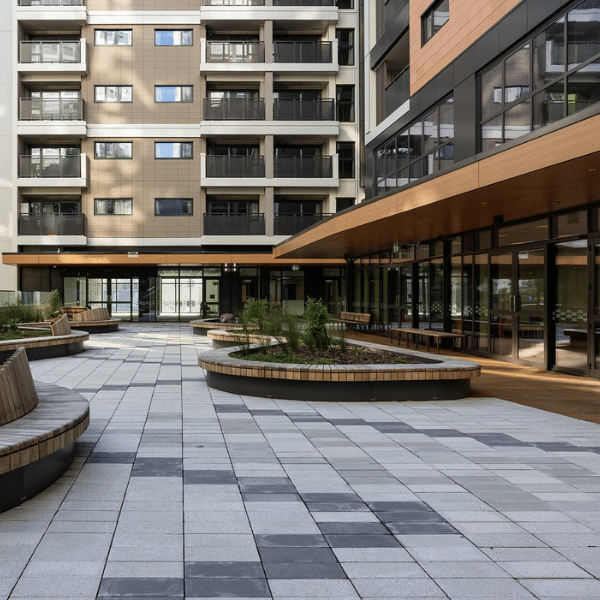
139 Greys Ave – Te Mātāwai Kaianga Ora Project
Te Mātāwai is a pivotal residential development in the heart of Auckland CBD, part of Kāinga Ora redevelopment.
Read More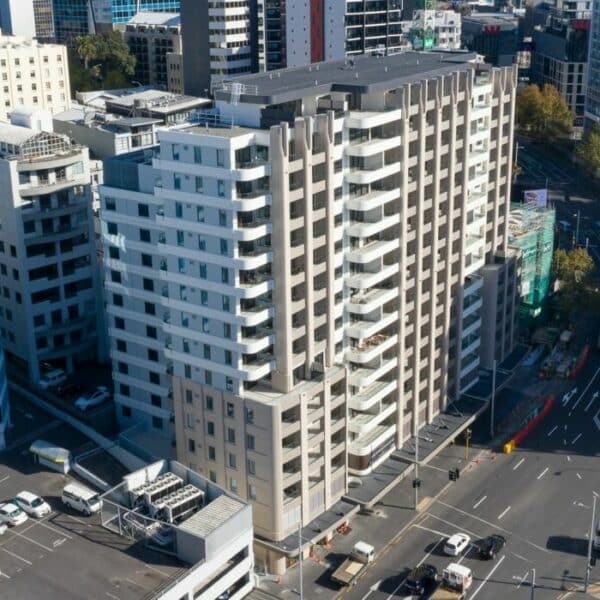
Antipodean Apartments
Recently completed, this substantial inner-city residential development encompasses 160 apartments over 14 levels in the vibrant heart of Auckland’s CBD.
Read More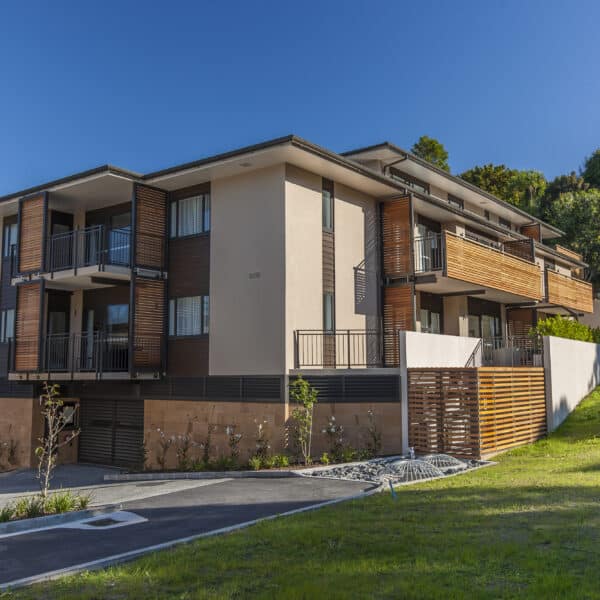
Aria Bay Retirement Village
Aria Bay is an innovative residential retirement village situated in the heart of Browns Bay.
Read More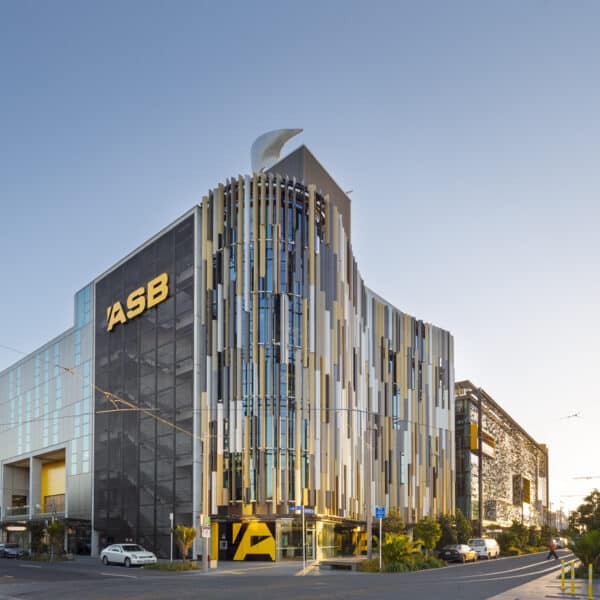
ASB Building – North Wharf
In the ASB project, Casali features across the roof expanse of buildings 22 and 23
Read More
Auckland Art Gallery
The project involved a significant amount of civil works, with retention piling, soil nails and ground anchors used to allow excavation and construction of new basement levels between the heritage buildings.
Read More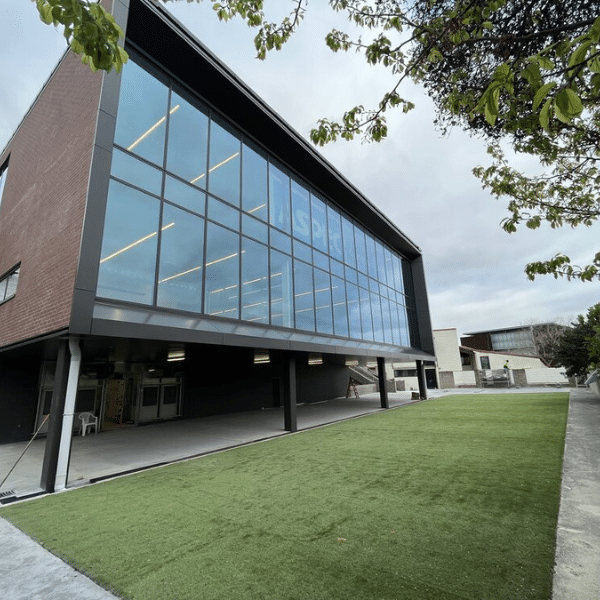
Auckland Grammar School Library
The Auckland Grammar School Library required a robust and watertight tanking solution to withstand the physical demands of the site and ensure structural longevity.
Read More
Auckland War Memorial Museum
The rear Southern courtyard, built in 1960, provided the space for six new floors. The courtyard was excavated to a depth of 12 metres to allow two basement levels.
Read More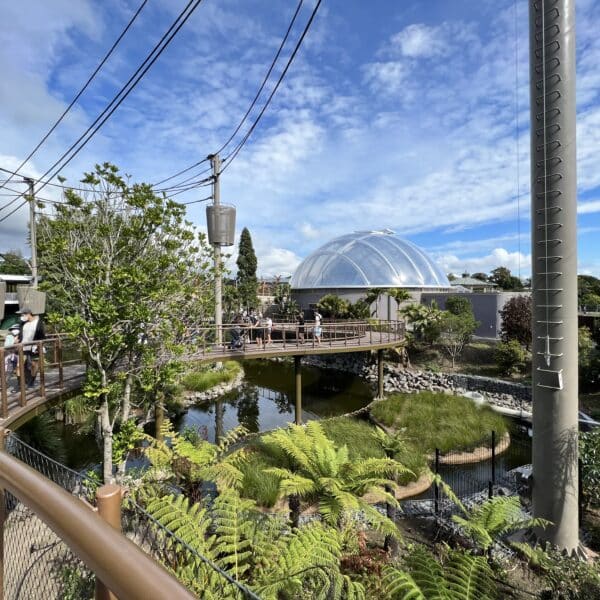
Auckland Zoo – East Asia Precinct
Auckland Zoo is the biggest Zoo in New Zealand. This project was apart of the Zoo’s 10-year re-development plan attempting to transform the zoo.
Read More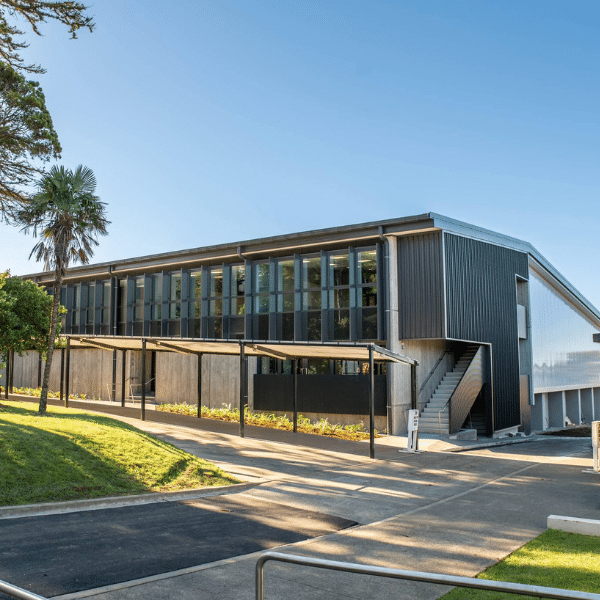
Baradene College Gymnasium
A robust waterproofing system to ensure a weathertight gymnasium for present and future Baradene students.
Read More